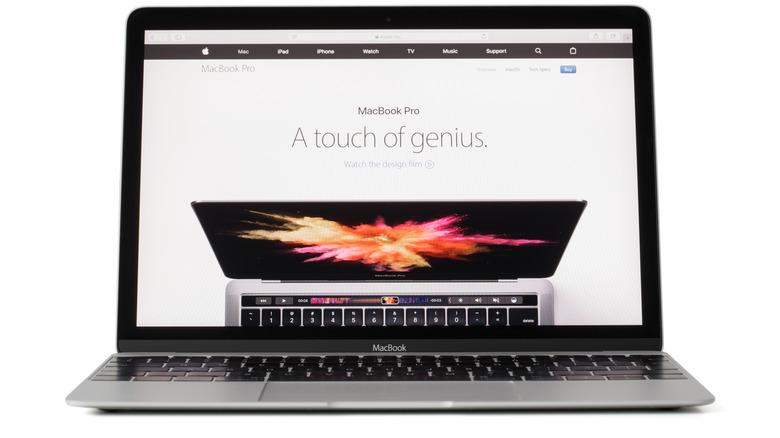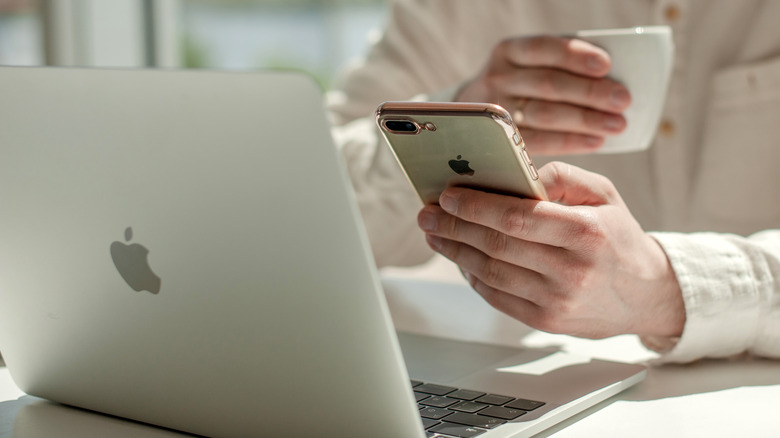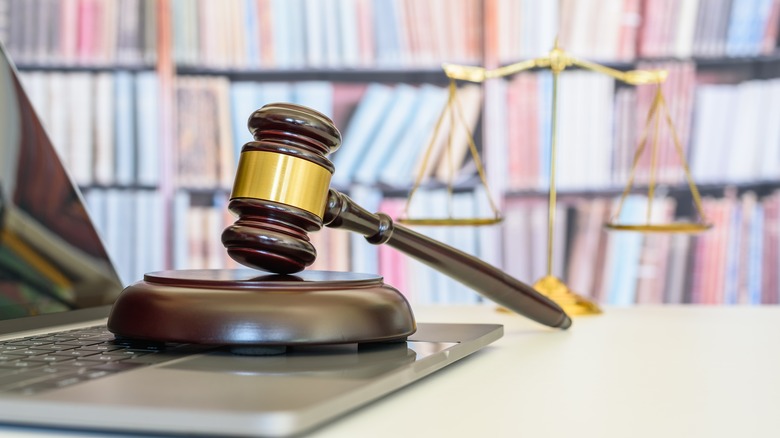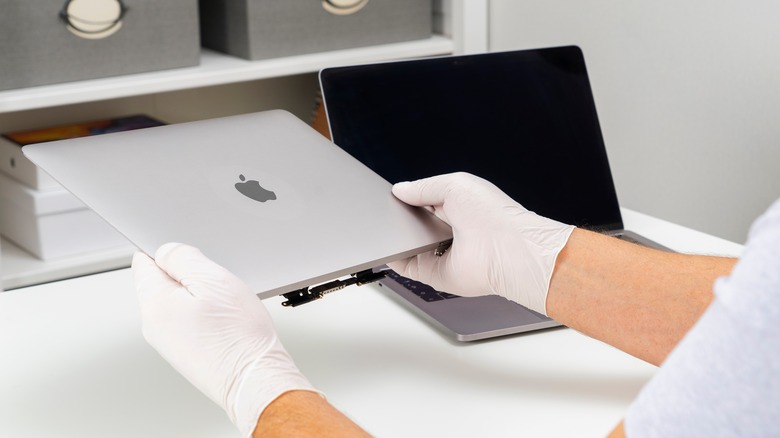How To Check If Your MacBook Entitles You To $395 Following Apple's Class-Action Lawsuit Settlement
A class action lawsuit about Apple's MacBook butterfly keyboard design has finally been settled. Affected customers could claim up to $395 for each faulty computer purchased. Problems frequently arose with the keyboards when dirt and dust managed to get beneath the keys. When enough grime built up the keyboards would stop working. and Apple's response to the issue wasn't ideal. It took its time responding to customers, and, in some cases, allegedly refused repairs. This left buyers with expensive high-end laptops that they simply couldn't use. The initial ruling only allowed customers in seven U.S. States where individual lawsuits were filed to form a "class." But now affected customers from all 50 states can file a claim.
The keyboard issue arose when Apple decided to slim down its MacBook range. The new, slimmer, keys weren't well received by all customers, with some finding them uncomfortable. Worse still, the design of the keys made them more susceptible to failure, which is ultimately what resulted in the lawsuits. One failed switch could also result in the entire keyboard having to be replaced. Evidence presented during the case included internal documents from Apple, which showed the company was aware of the keyboard's faults.
Despite this, Apple went ahead and put the keyboards in one of its flagship products. How much you can claim depends on if your laptop is eligible and what exactly has gone wrong with it. Some people, like those who had repairs done through Apple, might have an easier time claiming it than others. But there are several ways to lodge a claim, and if you believe you are eligible you should look into it before the deadline passes.
Which MacBooks were affected?
The case covers MacBook laptops made between 2015 and 2019, and is designed to compensate individuals who had to get those laptops repaired. A broad range of products are affected, and identifying if your MacBook is one of them is your first step towards making a claim.
The list of eligible MacBooks includes: MacBook (Retina, 12-inch, Early 2015, 2016, and 2017 models), MacBook Air (Retina, 13-inch, 2018 and 2019 models), MacBook Pro with two Thunderbolt 3 Ports (13-inch, 2016, 2017, and 2019 models), MacBook Pro with four Thunderbolt 3 Ports (13-inch, 2016, 2017, 2018, and 2019 models), and the MacBook Pro (15-inch, 2016, 2017, 2018, and 2019 models). If you want to be certain your MacBook is eligible for a claim, and have your serial number handy, you can enter it on Apple's website to confirm you're covered. Anyone who purchased an affected laptop between the dates covered is able to make a claim. This includes individuals, businesses, corporations, and other organizations.
What happens when you file a claim?
The maximum amount you can recoup via claim is $395, and the claimants are split into three groups. The first group consists of people who had to replace the topcase of an eligible MacBook twice within four years from when they purchased it. These people should receive an email or a postcard with more details on how to claim. They will initially receive $300, but this figure could go up or down depending on how many claims are ultimately made. The number could also grow, as it covers people who need multiple top case replacements right up until November 28, 2024.
Then there are individuals who only needed a single topcase replacement. The maximum amount of compensation for this group is $125, and affected individuals will need to complete an online form if they haven't received a postcard or email telling them they are eligible to claim. The form also includes a statement that the topcase replacement they received did not resolve their keyboard problems. If the repair isn't noted in Apple's records, individuals may have to provide a receipt and proof of purchase. Finally, there are the people who have had to replace one or more keycaps since they purchased their MacBook. As with those who required a single topcase replacements, the same online form must be filled out and receipts must be provided if the repair isn't in Apple's records. Payouts are capped at $50, though this could be reduced depending on the number of people who eventually make claims. People who purchased one of the affected MacBooks, but did not need to replace the topcase or any of the keycaps aren't eligible for a payout (via Keyboard Settlement).
How do you make a claim?
If you've received a postcard or email telling you that you're eligible, you simply need to provide contact details for your claim to be processed. The postcard or email should contain both a unique ID and PIN that you can enter on the class action's website. Entering the ID and PIN should take you to a form where you can fill in all of the details the case's administrators need. Once that's done, simply wait for a check to show up in your mailbox. If you haven't received an email or postcard, but believe you are eligible, it's a little more complex. You'll have to fill in an online form and take things from there. There's also a deadline for some members of the class that isn't too far away. If you're in "Group 2" (those who only replaced their topcase once) or "Group 3" (individuals who replaced keycaps) then you have until March 6, 2023 to submit a claim form. If the deadline passes, you're out of luck. Individuals who require multiple topcase replacements have until November 28, 2024, and that includes any replacements that are needed between now and that time.
It is worth noting, filing a claim does remove your rights to further compensation on this issue, as well as your rights to file a lawsuit against Apple due to the issues covered in the lawsuit. If you would like to retain these rights, you can opt out of the class by filing a form — though this does mean you aren't entitled to any of the settlement money from this particular lawsuit.



